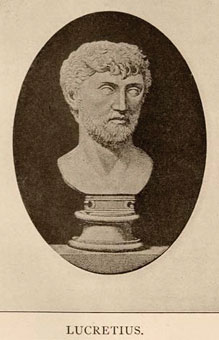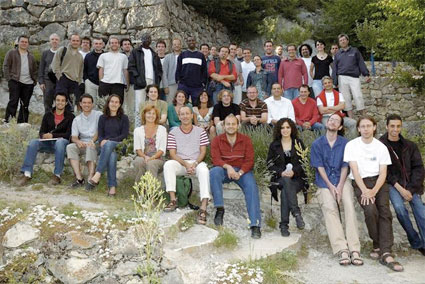Instabilités hydrodynamiques
|
Organisation : |
Université de Provence (Marseille) |
|
Coordinateur : |
Paul Clavin, IRPHE |
|
Dates : |
20 au 25 mai 2008 |
| Participants : | Ricardo Betti (USA), Jean-Luc Beaumont (F), Pierre Carles (F), Jean-Marie Clarisse (F), Paul Clavin (F), Laurent Duchemin (F), Jens Eggers (UK), Marco Fontelos (E), Serge Gauthier (F), Guy Joulin (F), Christophe Josserand (F), Laurent Masse (F), Léonard Monsaigeon (F), Javier Sanz (E), Alberto Verga (F). |
Fluides et solides en situations extrêmes
|
Organisation : |
Institut Non Linéaire de Nice (INLN) |
|
Coordinateur : |
Freddy Bouchet |
|
Dates : |
26 au 30 mai 2008 |
|
Participants : |
Médéric Argentina, Cristobal Arratia, Elsa Bayart, Jean-Luc Beaumont, Luca Biancofiore, Freddy Bouchet, Maryvonne Chalony, Julien Chopin, Paul Clavin, Axel Cournac, Lauris Ducasse, Gustavo Düring, Brice Eichwald, Adel Haddad, Florence Haudin, Xavier Noblin, Giles Pfingstag, Sara Quiligotti, Sergio Rica, Patrick Tabeling, Rani Taher, Ch. Van den Broeck, Antoine Venaille, E. Simonnet. |
Ecole Doctorale Européenne
| Organisation : | Laboratoire 13S, Algorithmes, Université de Nice |
| Coordinateur : | Luc Deneire |
| Dates : | 2 au 6 juin 2008 |
| Participants : | Nuria, Mickael, Matthias, Jose Leitao, Luc Deneire, Soren, Pietro, Zafiris, Kim, Prabin, Yoann, Daniele, Romain. |
La poésie scientifique de Lucrèce à nos jours
|
Organisation : |
Centre Koyré, Ecole des Hautes Etudes en Sciences Sociales, Paris |
|
Coordination : |
Jean Dhombres |
| Co-organisateurs : | Françoise Graziani, Hugues Marchal, Baldine Saint-Girons |
| Publication : | Les actes de ce premier colloque doivent paraître dans Sciences et Techniques en Perspective en Juin 2009. |
|
Dates : |
14 au 19 juin 2008 |
|
Participants : |
Patrizia d’Alessio : Poétiques pseudo-biologiques, les maïeutike |
Pour un premier colloque sur la poésie scientifique, il paraissait naturel de commencer par les scientifiques et les artistes, puis de consacrer une journée à Lucrèce, et ainsi de remonter au travers des âges, non pour donner un bilan exhaustif, mais, grâce aux participants et à leurs savoirs, de pointer des différences, manifester des analogies, et surtout les variations d’un genre qui semble aujourd’hui reprendre de la vigueur. Il s’est avéré utile de mêler un peu plus les interventions, et cela a donné un colloque particulièrement vivant, et la magie de Peyresq a une fois de plus opéré.
La poésie scientifique de Lucrèce à nos jours
Dans son Rapport à l’Empereur sur la littérature française, Marie-Joseph Chénier consacrait tout un chapitre à la “poésie didactique”, à laquelle il donne comme modèles Lucrèce et Virgile. Mais à l’un il attribue seulement l’illustration d’une “doctrine” (la philosophie d’Epicure), et à l’autre la célébration d’un art particulier (celui des cultivateurs). Le critique ne mentionne pas la “poésie scientifique” et tout lui paraît sans doute achevé par la chute rhétorique concernant le poème de Delille - Les trois règnes de la nature - auquel des scientifiques avaient participé par de nombreuses notes accompagnatrices : “M. Delille est entré dans les détails des sciences naturelles, et même avec un succès qui agrandit notre poésie ; peut-être aussi en dépasse-t-il les bornes, qui sont celles du beau”. Ce Chénier énonce un lieu qui va devenir commun avec le romantisme français, radicalement opposé à ce que son frère André avait si magnifiquement écrit dans son Hermès.
Il faut attendre le Victor Hugo de la maturité pour retrouver une sorte de poésie scientifique, ou plutôt de célébration du progrès, poésie bien différente de celle de Ronsard et de quelques autres poètes du XVIe siècle. Cette poésie était bien proche à la fois de l’original ancien de Lucrèce et des questions scientifiques et philosophiques alors débattues.
Le XXe siècle s’avère bien différent avec l’œuvre de Saint-John Perse pour ne citer qu’un exemple. L’aventure historique de ces sortes de poésie en français est différente de celle en langue italienne, anglaise, allemande, et bien sûr de celle en langue latin, ou en hébreu. Marie-Joseph Chénier ne parlait même pas de “poésie descriptive”, qui a souvent pu être un autre nom pour la poésie scientifique. Il n’en envisageait pas les deux versants presque universels. D’une part, la célébration, éventuellement mystérieuse ou horrifiée de la Nature et du Monde, où la divinité joue souvent son rôle ; d’autre part celle de la connaissance, qui est quelquefois présentée comme une conquête et l’honneur de l’esprit humain. Felix qui potuit cognoscere rerum causas est une expression qui servait de signe de reconnaissance, idéologique sans aucun doute, à de nombreux savants concourant pour un prix aux nombreuses Académies des sciences à l’époque des Lumières. Et il est facile de citer nombre de scientifiques pour lesquels une certaine poésie joue un rôle qui n’est pas seulement de “distinction” comme une quelconque sociologie des sciences voudrait le présenter, justement pour éviter d’avoir à réfléchir sur l’imaginaire scientifique. Le livre Newton demands the Muse est un exemple réussi de travail sur cette poésie, une fois passée la révolution scientifique du XVIIe siècle. Il y a pourtant bien peu d’études sur le genre, après la révolution quantique ou la révolution relativiste, et bien peu sur la célébration à la façon de Saint John Perse. En sens historique inverse, il est utile d’ouvrir à nouveau un dossier tel que Lucrèce au XVIe siècle, ou pendant les Lumières.
Le but, qui était de s’interroger en général sur la poésie scientifique, au-delà des périodisations historiques et même des langues, a été atteint pour ce colloque, premier d’un genre.
13ème Rencontre de Cosmologie de Peyresq : “Micro & Macro Structure of Spacetime”
|
Organisation : |
Université de Maryland, Université de Barcelone, Université Libre de Bruxelles |
|
Coordination : |
Bei-Lok Hu, Ted Jacobson et Edgard Gunzig |
|
Dates : |
21 au 27 juin 2008 |
|
Participants : |
Charis Anastopoulos (GR), Cliff Burgess (CA), Edgard Gunzig (BE), Valeri Frolov (CA), Bei-Lok Hu (CA), Bill Unruh (CA), Renaud Parentani (F), Cédric Deffayet (F), Ted Jacobson (US), Seif Randjbar Daemi (), Albert Roura (US), Rafael Sorkin (US), et Brandon carter (F). |
| Publication : | Les “proceedings” de Peyresq Physics 11 et 12 seront édités dans un numéro spécial de “Classical an Quantum Gravity”, vol.25/num.15 (2008) |
Quant à Rafael Sorkin, il nous résume les deux magnifiques exposés qu’il consacra au problème de la recherche d’évidences expérimentales d’une sous-structure discrète ou "atomique" de l’espace-temps. L’existence d’une telle atomicité de l’espace-temps est au cœur des diverses approches d’une éventuelle gravité quantique.
McMaster University and Perimeter Institute, Canada. Scientific associate at CERN.
“Extra Dimensions, Dark Energy and the Cosmological Constant Problem”
My talk was aimed at explaining why extra dimensions may provide a fruitful approach to addressing the cosmological constant problem. The main idea is that extra dimensions allow one to break the link that is the root source of the problem: the equivalence between the observed curvature of space (which we measure to be small) and the energy of a 4D Lorentz-invariant vacuum (which we believe should be large).
Once one admits the possibility of addressing the issue in higher dimensions, one also finds several other nice features. First, extra dimensions can (just) experimentally be large enough to be relevant to the problem, but only if all known non-gravitational particles are trapped on a brane and so cannot move throughout all of the extra dimensions. Second, given ordinary particles are trapped on branes in extra dimensions, the only thing that changes at low energies is how gravity responds to matter, and in particular to the vacuum energy.
Unusually, this can be done in a way that is consistent with what we know about the well-constrained gravitational and non-gravitational interactions at these low energies.
I described the proposal of Supersymmetric Large Extra Dimensions, which provides the most concrete framework of this type, in which one can formulate in detail how the cosmological constant problem gets re-phrased, and identify how much progress can be made in this way. The proposal is very predictive, with potential implications for the Large Hadron Collider as well as tests of gravity on both large and small scales. The talk briefly described some of its possible observational implications, and summarized some of the open issues which remain to be resolved.
Renaud Parentani
Professeur a Paris-Sud 11, rattaché au Laboratoire de Physique Théorique, UMR du CNRS 8627
“Initial conditions in Quantum Cosmology, and interpretation of the solutions of the WDW equation”
We reconsider the much debated question of the probabilistic interpretation of the solutions of the Wheeler De Witt equation, in the light of an adiabatic treatment which applies to near homogeneous
cosmological states. This treatment allows to write the general solution as a sum of two families of (matter) states. The WDW equation then rules both transitions within each family and transitions between states belonging to these two. By direct inspection, one verifies that the first type of transitions behave as those predicted by the corresponding Schroedinger equation, whereas the second transitions are absent when working in a given background geometry.
When the matter content in the universe is macroscopic, the second are exponentially suppressed. Therefore the evolutions of each family of states are uncoupled. In addition these evolutions are naturally endowed with a probabilistic interpretation which is based on the current carried by the solution, as proposed by Vilenk. When the universe is not macroscopic, the WDW equation implies that these two evolutions are entangled and that the conserved quantity that could provide a probabilistic interpretation contains a difference of squares.
We compare these properties to the similar ones which are obtained when considering the evolution of the state of a molecule which is scattered in an external static potential, and explain why in that case, the statistical interpretation follows from the possible measurements that can be performed by an external observer.
In conclusion, whereas previous studies had convincingly showed that the notion of the background geometry wherein matter transitions take place is an emergent notion of quantum cosmology, our analysis shows that the notion of probability as used in quantum mechanics is also emergent.
Ted Jacobson
Professor Department of Physics, University of Maryland, College Park, MD 20742-4111 USA
“Vacuum thermodynamics and gravitation”
I began by recalling the parable of the ideal gas, to illustrate how one may obtain thermodynamic information such as equation of state and entropy function by using certain qualitative features of the microscopic physics, without knowing anything about its details.
I then reviewed how a similar line of reasoning can be applied to spacetime itself, to infer the Einstein field equation for gravity as an equation of state.
The basic ingredients in this argument are the (well-motivated) assumption that causal horizons have an entropy proportional to their surface area, and the (somewhat well-motivated) assumption that flux of boost energy across such a horizon is, in effect, heat, and is therefore equal to the Unruh temperature times the corresponding entropy change.
In this talk I clarified some points that had remained more obscure in earlier presentations. In particular, I sharpened the notion of the approximate Killing vector field that characterizes the local Lorentz symmetry of the spacetime, and I showed that the local horizon must have vanishing expansion at the equilibrium point. More interestingly, I argued that by contrast the shear of the horizon need not be zero, but if it is non-zero then there must be an associated “internal entropy production” of the horizon. This yields a value for the shear viscosity of the horizon that agrees with the one inferred for black hole horizons using the membrane paradigm.
Finally, I discussed a puzzling point, namely the fact that when the cutoff is allowed to diverge, so that the entropy is infinite, the reasoning I gave seems to imply the vacuum Einstein equation must hold. This seems problematic, since one can conceive of quantum field theory in a curved spacetime background that fails to satisfy the vacuum Einstein equation. I offered the suggestion that perhaps the problem here is that equilibrium thermodynamics cannot be used in the presence of infinite entropy. However, I expect a better explanation should and can be given.
Albert Roura
Director's Postdoctoral Fellow, Los Alamos National Laboratory (USA)
“Backreaction from non-conformal fields in de Sitter spacetime”
We study the backreaction on the mean field geometry due to non-conformal quantum fields in a Robertson-Walker background. For weakly non-conformal fields we compute perturbatively the expectation value of the stress tensor operator corresponding to a variety of vacuum states, and use it to obtain explicitly the semiclassical gravity solutions for isotropic perturbations around de Sitter spacetime, which is found to be stable. Our results show clearly the crucial role of the non-local terms that appear in the effective action: they cancel the contribution from local terms proportional to the logarithm of the scale factor which would otherwise become dominant at late times and prevent the existence of a stable self-consistent de Sitter solution. In the opposite regime, namely, the case of strongly non-conformal fields with a large mass, we obtain the effective action for a general spacetime geometry. The kind of semiclassical corrections that it generates as well as the implications for dark energy models based on the renormalization-group running of the cosmological constant due to massive fields in the decoupling regime are discussed.
Valeri Frolov
Professor, Killam Chair, Department of Physics, University of Alberta, Edmonton, Canada
“Hidden Symmetries of Higher Dimensional Black Holes”
The most general known solution describing higher dimensional rotating black holes with NUT parameters in an asymptotically (anti) de Sitter spacetime is a Kerr-NUT-(A)dS metric. It is demonstrated that this metric possesses a principal CKY tensor, that is a second rank closed conformal Killing-Yano tensor. This tensor generates a `tower' of Killing-Yano and Killing tensors, which together with the existing Killing vectors are sufficient for the complete integrability of geodesic equations and the separation of variables in the Hamilton-Jacobi, Klein-Gordon and Dirac equations. It is also shown that these hidden symmetries, generated by the principal CKY tensor, allow one to solve the equations for a stationary string configurations and the equations for the parallel transport of the frame along geodesics in these spacetimes. Moreover, any solution of the Einstein equations with a cosmological constant obeying the principal CKY tensor is a Kerr-NUT-(A)dS spacetime. These “miraculous” properties of the higher dimensional Kerr-NUT-(A)dS metrics make them quite similar to the their 4-dimensional “cousin”.
Bill Unruh
Professor of Physics and Astronomy, University of British Columbia, and Fellow and Founding Directory, Cosmology and Gravity Program, Canadian Institute for Advanced Research.
I talked about the issues of locality within quantum mechanics. One hears in many places these days that quantum mechanics is a non-local theory, often from people working in the foundations of quantum mechanics. This is based on a poor analysis of what locality means within a quantum theory, and a misinterpretation of Bell's theorem. Bell proved that a non local, realistic theory can ever duplicate all of the predictions of quantum mechanics. He did this by looking at the correlations between measurements of physical attributes at widely separated locations, and showed that those correlations were stronger in quantum theory than they are in any classical local realistic theory, if the quantum state was carefully chosen and the physical attributes measured was carefully chosen. But both legs of Bell's assumptions about classical theories are crucial, not simply locality. In particular I looked at the use that is made of the assumption of locality in the classical theory in proving Bell's inequalities. My conclusion is that far from separating classical from quantum theories, the assumption of locality is used to make the classical theory as much like the quantum theory as possible. Namely, in quantum theory, one is given, by the rules of quantum mechanics, that the sum of correlations is equal to the correlation of the sum of the physical attributes. <AB>+<CD>=<AB+CD>. This however is not in general true of a classical theory. In particular, Bell used locality to impose this condition on the classical correlations.
Having imposed this requirement, it becomes clear that the heart of quantum theory's difference from the classical is not in the assumption of locality. It is in the behaviour of the values of the physical attributes in the quantum vs the classical theory. In classical, the assumption is that the possible values of the sum of two attributes is the sum of the values of the attributes themselves. If A and B can have possible values of +1 or -1, then A+B can have possible values of-2, 0, or 2. But in quantum theory the possible values of A+B can be +sqrt(2) or -sqrt(2) if A and B are appropriately chosen. It is the realistic assumption, that even if A and B are not directly measured, they still have one of their possible values as if they had been measured, and that the combination of those values is just the combination of those classical values, that causes the difference between the classical and quantum theory. It is not locality, but realism that separate the two. Quantum theory is not non-local. It is simply weird.
Charis Anastopoulos
Researcher at the physics department, University of Patras, Greece.
A new formalism is presented for the study of the time-of-arrival. The ingredients of the formalism are the algebraic structure of the time-of-arrival histories and the decoherence functional (both introduced in the consistent histories approach to quantum mechanics). These allow for the construction of a Positive Operator Valued Measure (POVM) for the time of arrival. This formalism provides by construction positive definite probabilities and it respects the convexity of the space of quantum states.
I then show the application of this formalism to three concrete problems :
i) The time-of-arrival for the free particle, where we recover a POVM first constructed by Kijowski.
ii) The formulation of quantum tunnelling as a time-of-arrival problem, which allows us to use the POVM to identify the tunnelling time. The result coincides with the classic Bohm-Wigner time, but without the ambiguities inherent in the usual treatment.
iii) The formulation of the decay of unstable states through tunnelling as a time-of-arrival problem, which allows us to use the POVM to define the probability of decay for a general class of potentials. We show that the exponential decay is generic, provided three conditions are satisified.
First, there should be no interference between different attempts of the particle to cross the barrier. Second, there should be no interference between different decay channels characterized by different decay times. Third, the time-scale of the decay should be much larger than the microscopic timescales characterizing the initial state. We finally explore regimes that are not characterized by an exponential decay law, in particular situations that correspond to “quantum beats”.
B. L. Hu
Professor at Maryland University
“Quantum Entanglement does not imply Nonlocality -- Meaning of EPR from a detailed calculation of two qubits interacting with a common quantum field”
This work studies the entanglement dynamics of two qubits at a spatial separation (including spacelike separation). What motivated me and my co-workers (Charis Anastopoulos, Sanjiv Shresta and Shih-Yuin Lin) to do a thorough analysis based on quantum field theory (QFT) was my uneasiness with the attributed meaning of Einstein-Podolsky-Rosen (EPR) paradox [1] today, which to me is extrapolated too far and used too loosely. Specifically I feel that the operational interpretation / definition of EPR pertaining to quantum `nonlocality’ is erred, at least misplaced: It says nothing about nonlocality in spacetime or field theory, nor violation of causality. Quantum nonlocality used in today’s atomic-optical literature is based solely on quantum mechanics which does not take into consideration of relativistic effects which resides in quantum fields (in cavities or vacuum). It refers only to entanglement or correlation at space-like (outside-of-the-light-cone) separations. This is not a particularly new or intriguing feature when viewed in the light of quantum field theory. In this work we study a simple system of two qubits interacting with a common electromagnetic field [2] (see [3] for two harmonic oscillators) and use the explicit results we obtained on the temporal and spatial dependence of entanglement to illustrate this point: There is entanglement at space-like separation but there is no quantum `nonlocality’ or any sense of causality violation. The temporal evolution of quantum entanglement has been studied before for two qubits each interacting with its own field, where `sudden death’ is detected [4], or interacting with the same field in the Born-Markov approximation [5], but the full dynamics with spatial dependence of entanglement is new.
[1] A. Einstein, B. Podolsky and R. Rosen, Phys. Rev. 47, 777 (1935).
[2] C. Anastopoulos, S. Shresta and B.L. Hu, “Quantum Entanglement under Non-Markovian Dynamics of Two Qubits Interacting with a Common Electromagnetic Field” under consideration by Phys. Rev. A [quant-ph/0610007]
[3] S.Y. Lin and B.L. Hu, “Entangled Forever: Spatial and Temporal Dependence of Quantum Entanglement Between Two Inertial Detectors (atoms)” (in preparation)
[4] T. Yu and J.H. Eberly, Phys. Rev. Lett. 93, 140404 (2004).
[5] Z. Ficek and R. Tanas, Phys. Rev. A 74, 024304 (2006).
Seif Randjbar Daemi
Head of the High Energy, Cosmology and Astroparticle physics section of the ICTP, Assistant Director of the Abdus Salam International Center for Theoretical Physics
The idea that the space time may have more than 4- dimensions goes back to the 20`s of the past century. This attractive idea was originally proposed to unify the two known interactions at the time, namely, the gravity and electromagnetic forces.
Super-string and super-gravity theories are formulated naturally in higher than 4-dimensions. The recent interest in this idea has been triggered by the desire to find an answer to the hierarchy problem, namely, the puzzle as to why the weak and gravity scales are so widely different from each other. It is argued that if our universe is a brane extending in a higher than 4 dimensions in such a way that the observed particles are all localized to this brane while gravity propagates both on the brane as well as in the bulk then the hierarchy puzzle can be formulated in a novel way and possibly be solved. This idea has been mostly discussed in a 5-dimensional space- time. In my talk I discussed a class of 6-dimensional supergravity models which exhibit some remarkable properties. A class of 3-brane solutions and the exact analysis of particle spectrum around these solutions with a view to particle localization on a 3-brane were exhibited. Among other things it was shown that there is a mass gap in the spectrum which does not vanish even in the large volume limit. it was also demonstrated that the parameter space for the stability of the solution is larger for the negative tension solutions than for the positive tension ones. Both of these results are counter-intuitive and thus deserve further investigations.
Rafael Sorkin
Professor of physics at Syracuse University, USA and the Perimeter Institute for Theoretical Physics, Waterloo, Ontario, Canada. Member of the Research Staff of Perimeter Institute, Fellow of the American Physical Society and member of Canadian Association of Physics
In my two talks I asked how one might hope to find experimental or observational evidence for a discrete or "atomic" substructure of spacetime, assuming specifically that the deep structure of spacetime is that of a causal set. Comparison with the atomicity of matter, suggests several possibilities, but some of them could not occur in the causal set context (eg modified dispersion relations), while others would be expected to have analogs there (e.g. extinction of light from distant sources). In addition to the latter, there are new effects that flow from the deep difference between a causal set and a Euclidean lattice.
A striking example of the latter is the radical nonlocality mandated by the local Lorentz-invariance of the causal set. (Discretenes + Lorentz invariance implies nonlocality!) I discussed this implication in the context of the propagation of a scalar field.
After introducing the causal set idea, I explained why it is so hard to find any analog of the d'Alembertian operator on a causal set. I then described how the difficulties can be overcome -- but only in part -- and I wrote down a formula for such a d'Alembertian or “box operator”. Under the assumption that the fluctuations in the values of this operator applied to a test field need to be small pointwise, I argued that the underlying nonlocality must survive on intermediate length scales much greater than Planckian. This would yield for example a nonlocal effective equation of motion for a scalar field, and the nonlocality could be observable in the near future, if indeed it has not been ruled out already by precision experiments at atomic and subatomic scales.
Note on causal sets: The causal set is meant to describe the “atomic” nature of spacetime at the smallest scales. Structurally, a causal set is a kind of family tree or genealogical diagram. Among the various ideas put forward in the search for a theory of quantum gravity, the causal set hypothesis is distinguished by its logical simplicity and by the fact that it incorporates the assumption of an underlying spacetime discreteness organically and from the very beginning. In the way that it has developed,it has given rise to a mathematical framework (the “dynamics of sequential growth”) in which time is an active process of “becoming” that can be identified with the continual birth of new elements of the causal set.
Cédric Deffayet
Chercheur au CNRS, Laboratoire APC, UMR 7164
“Spherically Symmetric Solution of Massive Gravity and the Goldstone Picture (APC)”
We discuss solutions of “non linear massive gravity”, i.e. a metric theory of gravity where the kinetic part of the metric is given the usual Einstein-Hilbert action, but a “mass term” is introduced via a coupling to a second non dynamical metric chosen to be flat. This coupling is chosen in addition such that the linearized theory reduces to the Pauli-Fierz theory for a massive spin two. We investigate solutions of this system which are static and spherically symmetric with the aim of a better understanding of a possible non perturbative recovery at small distances of the usual Schwarzschild solution via the so-called Vainshtein mechanism. We first show how one can recover, in the ansatz appropriate for a study of those kinds of solution, the so-called decoupling limit that was introduced by Arkani-Hamed et al. in the most general case. We then use this decoupling limit to show that the scaling once introduced by Vainshtein is not appropriate to a would be existing (non singular) solution at small distances. On the contrary, we find that all the possibly well behaved solutions show a different scaling, however also allowing for a recovery of solutions of massless gravity via a (modified) Vainsthein mechanism. Studying those type of solutions in the non-decoupling limit (i.e. keeping all the non linearities) we find however always singularities arising at finite radius, similar to those found by Damour et al.
Annexe 1 : Notes prises sur le vif par Ted Jacobson, témoignage d'un des aspects du travail effectué lors de nos rencontres.

3ème Ecole d’été en traitement du signal et des images : “Signaux, Images et Systèmes Complexes”
-
Organisateurs :
GRETSI et GdR CNRS ISIS, avec le soutien de l’Ecole Doctorale SFA (Nice) et de l’IXXI (Lyon)
Coordinateurs :
Pierre Borgnat (CNRS-ENS Lyon), Patrick Flandrin (CNRS-ENS Lyon) et
Laure Blanc-Féraud (CNRS-I3S Sophia)Dates :
20 au 26 juillet 2008
Internet : http://www.ens-lyon.fr/PHYSIQUE/Peyresq08/ Participants :
Mohamed Abadi, Patrice Abry, Sophie Achard, Pierre-Olivier Amblard, Guillaume Becq, Mohamed Selim Bensalah, Laure Blanc-Feraud, Pierre Borgnat, Abdelkhalek Bouchikhi, Pierre Borgnat, Patrice Brault, Emmanuel Brun, Pierre Chainais, Nicolas Chenouard, Anatole Chessel, Romain Couillet.?Antoine Coulon, Marcio de Moraes Marim, Benoît Ducarouge, Patrick Flandrin, Laurent Galluccio, Di Ge, Yann Gousseau, Cédric Gouy-Pailler, Pierre-Auguste Grivelet, Assia Hamzaoui, Aawatif Hayar, Alfred Hero, Syed Shahkar Kakakhail, Emilie Koenig, Thomas Lefevre, Maciej Lopatka, Clémence Magnien, Boris Mailhe, Marc Mezard, Farouk Mhamdi, Ziad Naja, Joseph Ndong, Oumar Niang, Cédric Richard, David Rousseau, Romain Tavenard, Mireille Tohme, Béatrice Vedel, Fabrice Wendling, Herwig Wendt.
-
- OBJECTIFS :
- Cette rencontre se situait dans le cadre des Écoles d'Été annuelles en Traitement du Signal et des Images que le GRETSI et le GdR CNRS ISIS organisent à Peyresq depuis 2006. Ouvertes à toutes les personnes intéressées (académiques ou industriels), ces Écoles s'adressent néanmoins prioritairement à des doctorants ou chercheurs en début de carrière, et ont pour but de présenter une synthèse ainsi que les avancées les plus récentes dans un thème de recherche d'actualité.
Le thème retenu pour 2008 était celui des “Signaux, Images et Systèmes Complexes”. La discipline des “systèmes complexes” s'intéresse à des situations où l'interaction d'un grand nombre d'entités de comportement simple au niveau microscopique peut faire émerger (avec rétro-action) un comportement collectif complexe et structuré au niveau macroscopique. Il en va ainsi de systèmes aussi bien naturels (physique, biologie) qu'artificiels (informatique, télécommunications) ou sociaux (économie, sciences humaines). L'étude des systèmes complexes est pluri-disciplinaire par nature et un enjeu majeur est de favoriser non seulement la coopération d'approches et méthodes issues d'horizons différents sur un même objet, mais aussi l'appréhension d'une même question “générique” à partir d'objets différents. Parmi les défis auxquels ce type d'études doit faire face se posent des questions d'analyse exploratoire de données (en grand nombre et grande dimensionnalité), de caractérisation (géométrique, statistique), de modélisation (non linéaire), de reconstruction ou encore de gestion de multiples niveaux de description et d'organisation (multiéchelles). Ce sont là autant de thèmes pour lesquels le traitement du signal et des images a forgé des outils susceptibles de jouer un rôle-clé dans l'étude des systèmes complexes, et peut trouver en retour dans ceux-ci une source d'inspiration pour de nouveaux développements.
L’objectif de cette 3ème session de l’École d’Eté de Peyresq en Traitement du Signal et des Images était donc double : elle se proposait d’une part de sensibiliser la communauté du signal et des images à des thématiques de type systèmes complexes susceptibles de tirer avantage des outils dont elle dispose, et d’autre part d’attirer un public pluri-disciplinaire intéressé à se former à des avancées méthodologiques récentes en signal et images.
COMPTE RENDU / REALISATION
L’École a été organisée autour de 6 cours dispensés par des spécialistes du domaine, laissant du temps chaque jour pour des exposés des auditeurs ainsi que pour des discussions informelles.
1. Complexité, information et géométrie (5h)
Conférencier : Alfred O. Hero, Professeur à l'Université du Michigan, Department of Electrical Engineering.
Ce cours s’est articulé autour des notions de complexité et d’information, abordant à la fois des problèmes de définitions et d’estimation. Un accent particulier a été mis sur les approches les plus récentes par des méthodes liées à l’utilisation de graphes, avec une discussion des outils théoriques soutenue par des applications concrètes.
2. Physique statistique, théorie de l’information et satisfaction de contraintes : convergences (5h)
Conférencier : Marc Mézard, Directeur de Recherche CNRS à l’Université Paris-Sud, Laboratoire de Physique Théorique et Modèles Statistiques.
Ce cours a offert une introduction aux modèles graphiques, avec une illustration par des problèmes issus de la physique statistique (verres de spin), de la théorie de l'information (codes de correction d'erreur) et de l'optimisation combinatoire (coloriage, satisfaction de contraintes). Il a détaillé la notion de graphe factoriel ainsi que les algorithmes de passage de messages (propagation des convictions, Min-Sum), discutant des questions comme celles des phases vitreuses dans les problèmes de satisfaction de contraintes, de la fragmentation de l'espace des solutions et des statistiques d'amas.
3. Lois d’échelle, modèles et outils : auto-similarité, multifractales et ondelettes (4h)
Conférencier : Patrice Abry, Directeur de Recherche CNRS à l'ENS de Lyon, Laboratoire de Physique.
Ce cours a donné une vision très générale de la notion d’invariance d'échelle, s’appuyant sur ses premières définitions pour motiver l’utilisation d’analyses multirésolution. Il a détaillé les classes principales des processus associés à de l’invariance d’échelle (processus auto-similaires à accroissements stationnaires, mémoire longue, mouvement Brownien fractionnaire et au-delà; processus (ou cascades) multiplicatifs : cascades de Mandelbrot, cascades de Poisson composé, mouvement Brownien fractionnaire en temps multifractal) et a discuté la question d’estimer les exposants caractéristiques correspondants ainsi que de trancher entre auto-similarité et nonstationnarité. Le cours a également offert un panorama général de l’analyse multifractale, (définitions, formalisme multifractal, coefficients dominants, estimation, intervalles de confiance et tests d'hypothèse)
4. Graphes, réseaux et internet (2h)
Conférencière : Clémence Magnien, Chargée de Recherche CNRS à l'Université Paris 6, LIP 6 (en collaboration avec Matthieu Latapy, Chargé de Recherche CNRS à l'Université Paris 6, LIP 6).
Ce cours s’est intéressé aux nombreux réseaux de différents types que l’on peut rencontrer dans différents contextes : réseaux sociaux, réseaux de communication, réseaux métaboliques, internet, web, réseaux d'épidémiologie, ... De nombreux travaux ont étudié ces réseaux en les modélisant comme des graphes (ensemble de noeuds et de liens), dits graphes de terrain. Ceci revient à s'intéresser uniquement à leur structure, en prenant en compte uniquement la présence ou l'absence de liens entre les éléments du réseau. Cette approche a permis de montrer que la plupart des graphes de terrain, bien que provenant de contextes très divers, ont des propriétés communes non triviales et que les questions qui se posent à leur sujet sont également similaires. En ce sens, ils appartiennent donc à un même domaine avec ses questionnements et méthodes propres, qui a connu ces dernières années un très grand essor. Notamment, l'analyse de ces graphes -- qui a pour but de les décrire de façon pertinente -- ainsi que leur modélisation -- qui vise à capturer leurs traits principaux dans des abstractions formelles à des fins de démonstration et de simulation -- ont atteint un certain niveau de maturité. Les études dans ce domaine ont créé des outils et méthodes utilisables sur n'importe quel grand graphe de terrain, quel que soit le domaine dont il est issu. Cependant, la grande majorité des résultats existants concerne des versions statiques des graphes, bien que la plupart d'entre eux évoluent au cours du temps par l'apparition et la disparition de noeuds et de liens. Il est donc crucial de concevoir des méthodes et des notions pour étudier la dynamique de ces réseaux. Le cours a illustré les questions qui se posent dans ce contexte, ainsi que le type de réponse qu'on peut y apporter, au travers de deux exemples : les réseaux d'échanges sur internet, et la topologie de l'internet vu comme infrastructure.
5. Statistiques et modélisation des images naturelles (2h)
Conférencier : Yann Gousseau, Maître de Conférences à l'ENST Paris, LTCI et Département TSI, avec une intervention de Pierre Chainais, Maître de Conférences à l’ISIMA, Clermont-Ferrand.
Ce cours a présenté tout d'abord les principales caractéristiques statistiques des images naturelles, qui en font des signaux tout a fait singuliers. En particulier, il s’est attaché à montrer leur caractère non-gaussien et leurs propriétés d'échelle, ainsi qu'à expliciter certains liens entre la géométrie des images et les caractéristiques observées, tel l'effet ciel bleu. Dans un deuxième temps, une présentation a été faite de modèle dits génératifs, qui permettent de rendre compte de certains aspects de la structure des images. Ces modèles sont construits par interaction de formes
géométriques élémentaires. Les deux modalités d'interaction qui ont été considérées, occlusion et transparence, sont à l'oeuvre lors de la formation des images naturelles.
6. Complexité des systèmes neuronaux : apport du traitement du signal et de la modélisation dans l’interprétation des activités épileptiques (2h)
Conférencier : Fabrice Wendling, Chargé de Recherche INSERM à l'Université de Rennes I, au LTSI (UMR INSERM).
La nature complexe, aléatoire, des données électrophysiologiques a conduit, aux cours des années passées, à une utilisation plus intensive des méthodes de traitement du signal. Celles-ci apportent des informations essentiellement descriptives et les résultats qu’elles produisent ne peuvent, à eux seuls, permettre de progresser significativement dans la compréhension des mécanismes impliqués dans la génération des activités épileptiques. La modélisation des systèmes neuronaux permet de dépasser la simple description des observations, en générant des hypothèses sur les mécanismes physiopathologiques impliqués. Cependant, la complexité de l’objet modélisé (réseaux de réseaux neuronaux) rend cette tâche difficile. En effet, les dynamiques temporelles observées s’expriment sur des échelles temporelles variables (activités épileptiques transitoires, crises d’épilepsie, processus plastiques impliqués dans l’épileptogénèse). Elles sont elles-mêmes issues de systèmes dynamiques non linéaires qui peuvent être considérés à l’échelle sub-cellulaire (canaux ioniques et récepteurs membranaires), cellulaire (neurone) ou tissulaire (assemblées de neurones couplées) et dans lesquels les propriétés de changement d’état (bifurcations, stabilité, instabilité) prédominent. Ce cours avait pour objectif de présenter une classe particulière de signaux (électroencéphalographiques) ainsi qu’une classe particulière de modèles physiologiquement argumentés (modèles macroscopiques de populations de neurones). L’articulation entre modèles et traitement des signaux non stationnaires et non linéaires a été discutée, en particulier dans sa capacité à nous faire progresser dans l’interprétation des formes d’ondes et des transitions observées dans les données réelles acquises chez le patient épileptique.
La session 2008 (qui faisait le plein en termes de participants) a été très riche scientifiquement et très animée. Comme les années précédentes, la qualité du lieu et de l’accueil ont contribué à faire de cette semaine une rencontre à la fois studieuse et décontractée. Elle a permis de nouer de nombreux contacts entre participants (auditeurs et orateurs confondus), qui seront sans nul doute à la source de collaborations futures. - OBJECTIFS :
- Patrick Flandrin, Pierre Borgnat et Laure Blanc-Féraud
Alexandre Grothendieck : Biographie, Mathématiques, Philosophie
Organisateurs :
Pierre Lochak, Winfried Scharlau, Leila Schneps
Coordination :
Pierre Lochak
Dates :
24 au 29 août 2008
Internet : http://people.math.jussieu.fr/~leila/grothendieckcircle/peyresq.html Participants :
Yves André (F), Jean Bénabou (F), Pierre Cartier (F), Michel Demazure (F), Robin Hartshorne (USA), Christian et Mme Houzel (F), Luc Illusie (F), Max Karoubi (F), Steve Kleiman (USA), Matthias Künzer (D), Pierre Lochak (F), Jean et Mme Malgoire (F), Guerino Mazzola (USA), Bill Messing (USA), Jaap Murre (NL), François Nicolas (F), Aleksander Pelczynski (PL), Alexis Pinchard (F), Bruno Pinchard (F), Winfried Scharlau (D), Leila Schneps (F), Carlos Simpson (F).
 Debout : William Messing, Jaap Murre, Alexander Pelczynski, François Nicolas, Winfried Scharlau, Luc Illusie, Yves André, Steve Kleiman
Debout : William Messing, Jaap Murre, Alexander Pelczynski, François Nicolas, Winfried Scharlau, Luc Illusie, Yves André, Steve Kleiman
Au milieu : Michel Demazure, Pierre Cartier, Pierre Lochak, Guerino Mazzola, Christian Houzel, Matthias Kuenzer, Jean Malgoire
Devant : Robin Hartshorne, Jean Bénabou, Leila Schneps, Max Karoubi
Absents : Carlos Simpson, Bruno Pinchard, Alexis Pinchard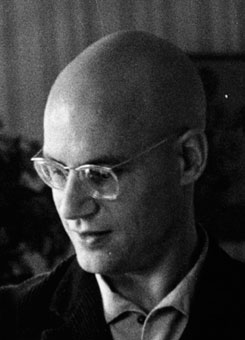 Alexandre Grothendieck
Alexandre Grothendieck- Programme des exposés :
Lundi 25 août :
1) “Contribution of Alexandre Grothendieck to functional analysis”, Aleksander PELCZYNSKI
b) “L’influence de Grothendieck sur la K-théorie algébrique et topologique”, Max KAROUBI
c) “1956-1964: Souvenirs Revisités”, Michel DEMAZURE
d) “Les universaux et le dieu caché”, Pierre CARTIER
Mardi 26 août :
a) “Les schémas”, Pierre CARTIER
b) “Dualité “continue” et “discrète”, Robin HARTSHORNE
c) “Groupes fondamentaux”, Jaap MURRE
d) “Algèbre homotopique, n-champs, infini-champs”, Carlos SIMPSON
e) “L’acte séparé: leçon d’intelligibilité par Réné Thom”, Bruno PINCHARD
f) La pensée de Grothendieck et la philosophie
Mercredi 27 août :
a) “La contribution de Grothendieck au séminaire Cartan sur les familles d’espaces complexes”, Christian HOUZEL
b) “Picard schemes”, Steve KLEIMAN
c) “Musicalité de Récoltes et Semailles”, François NICOLAS
d) “Grothendieck’s life”, exposé de Winfried SCHARLAU suivi d’une intervention de Jean MALGOIRE
Jeudi 28 août :
a) “Cohomologie étale et l-adique”, Luc ILLUSIE
b) “Le petit et le grand”, Jean BENABOU
c) “Cristaux et cohomologie cristalline, théorie de Dieudonné cristalline”, Bill MESSING
d) “Points de Grothendieck et gestes de Châtelet: les enjeux du lemme de Yoneda pour la musique”, Guerino MAZZOLA
e) Grothendieck, attaques, enterrement et mystère
Vendredi 29 août :
a) “Motifs et groupe de Galois motivique”, Yves ANDRE
b) “Yoga de géometrie algebrique anabélienne, théorie de Galois-Teichmüller”, Pierre LOCHAK
c) Discussion du projet du livre
-


 Pierre Cartier :
Pierre Cartier :
Les universaux et le dieu caché
Les schémasP. Cartier & Y. AndréUn quatuor :
J. Bénabou, A. Pelczynski,
M. Demazure, M. Karoubi

3rd ALTER-Net Summer School : "Biodiversity and Ecosystem Services"
ALTER-Net is a Network of Excellence of the 6th Framework Programme of the European Community.
The ALTER Net Mission is the integration of biodiversity research capacities across Europe to:
• Create a network for European long-term terrestrial and fresh-water biodiversity and ecosystem research
• Assess and forecast changes in biodiversity, structure, functions and dynamics of ecosystems and their services
• Consider the socio-economic implications and public attitudes to biodiversity.Executive Board :
Karl, Baadsvik, Chair, NINA, Trondheim, Norway; Wolfgang Cramer, PIK, Potsdam, Germany; Lars Lundin, Swedish University of Agricultural Sciences, Uppsala, Sweden; Henk Siepel, ALTERRA, Wageningen, The Netherlands; Jana ?pulerová, Institute of Landscape Ecology of the Slovak Academy of Sciences, Bratislava, Slovakia; JaroslavVrba, Hydrobiological Institute, Ceske Budejovice, Czech Republic
Conveners :
Wolfgang Cramer, Potsdam Institute for Climate Impact Research, Potsdam, Germany; Uta Fritsch, Coordinator of EURAC-Junior, Science Communication, EURAC research, Viale Druso 1, I-39100 Bolzano, Italy; Rik Leemans, Environmental Systems Analysis Group, Wageningen University, The Netherlands; Sabine Lütkemeier, Potsdam Institute for Climate Impact Research, Potsdam, Germany; Dagmar Schröter, Umweltbundesamt, Vienna, Austria; Allan Watt, Centre for Ecology & Hydrology (CEH) Edinburgh, Bush Estate, Penicuik, Midlothian, EH26 0QB, Scotland, United Kingdom
Coordination : Sabine Lütkemeier, Summer School Director, PIK, Potsdam, Germany
Brigitta Krukenberg, PIK, Potsdam, GermanyDates :
2 – 14 September 2008
Internet : http://www.pik-potsdam.de/alter-net/ Participants : Kristin Bohn (DE), Marleen Cobben (NL), Anouk Cormont (NL), Georgia Cosor (RO), Luis Costa (DE), Roos Den Uyl (NL), Markus Didion (CH), Stephanie Domptail (DE), Marina García Llorente (ES), Sarah, Raphaél Goldin (Australia), Jan Hanspach (DE), Csilla Hudek (HU), Kate?ina Ja?ková (CZ), Sanna Kivimäki (GB), Fanny Langerwisch (DE), Peter Lee (Australia), Luca Marazzi (IT), Peter Meffert (DE), Gábor Ónodi (HU), Michael Padmanaba (Indonesia), Gina Prior (GB), Vânia Proença (PT), Marte Qvenild (NO), Elle Rajandu (Estonia), Katharina Sabellek (DE), Teodoro Semeraro (IT), Marjolein Sterk (NL), Esteban Tapella (Argentina), Jonna Timonen (FI), Vanja Westerberg (FR), Brooke Wilkerson (NO), Patrick Zimmermann (IT) Lecturers : Michael Bredemeier (DE), Timothy Carter (FI), Wolfgang Cramer (DE), Anke Fischer (GB), Marina Fischer-Kowalski (AT), Georg Grabherr (AT), Christian Körner (CH), Rik Leemans (NL), Herrmann Lotze-Campen (DE), Wolfgang Lucht (DE), Hal Mooney (US), Mark Rounsevell (GB), Dagmar Schröter (AT), Martin Sharman (BE), Simron Jit Singh (AT), Will Steffen (Australia), Mark Sutton (GB), Hanne Svarstad (NO), Jean Vancompernolle (BE), Sybille van den Hove (ES), Sander van der Leeuw (US), Katrin Vohland (DE), Jarda Vrba (CZ), Allan Watt (GB)
Tutors : Wolfgang Cramer (DE), Nicolas Dendoncker (GB), Uta Fritsch (Chair, IT), Rik Leemans (NL), Diana Reckien (DE), Allan Watt (GB)
-
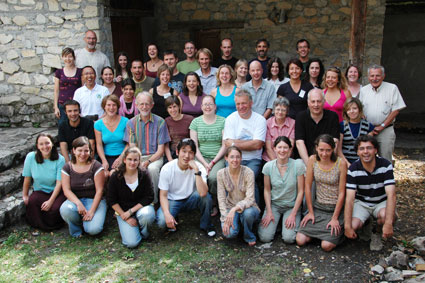
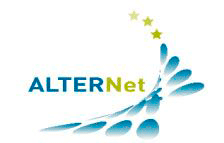 A Long-Term Biodiversity, Ecosystem And
A Long-Term Biodiversity, Ecosystem And
Awareness Research Network
- Objectifs :
- The summer school strived towards an integration of natural and social science aspects into the question of biodiversity and ecosystem services. The aim was, besides the aspect of environmental awareness, the dissemination, and critical review of the approach of integrated assessment of vulnerable ecosystems and their services under global change exemplified by biodiversity. The summer school presented the state-of-the-art of scenario techniques, ecosystem modelling approaches for selected ecosystem services and an intensive dialogue between the participants and the lecturers. Target groups were graduate students and young scientists from environmental sciences and related disciplines as well as social sciences mainly from ALTER-Net partner institutes. The 32 participants formed five working groups which each worked on a case study on the local region of the Var catchment on different sectors; i.e. water, agriculture, nature conservation and urban-rural transition. One delegate from each group and four permanent members formed a synthesis group who summarised the results of the four case studies for policy-makers. The report was written as if it had been a project funded by the EU with the nice acronym “MEDUSA”. As every year an excursion exemplified land-use change on the Plateau de Valensole, at the Lac de Ste. Croix and the Gorge du Verdon. At Moustiers-Sainte-Marie we visited a farm run by the Kokopelli association where they are breeding old varieties of vegetable and cross-breeding it with varieties from other parts of the Earth as a potential future option for this area. On the free day, hikes to the neighbouring mountains, a trip to the Lac d´Allos or simply relaxation were mainly on the agenda. One of the major goals for the summer school, the interaction between students and lecturers, was facilitated by the excursion and through the intensive tutorial and team work of the students which was attended by many lecturers in the afternoons.
Annexe 2 : Training future experts in “biodiversity and ecosystem services” : a progress report
-
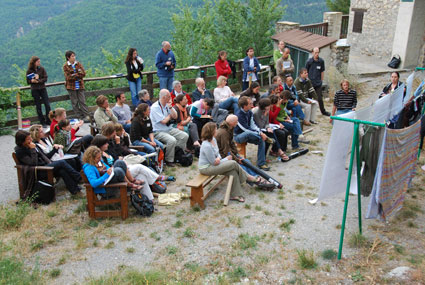
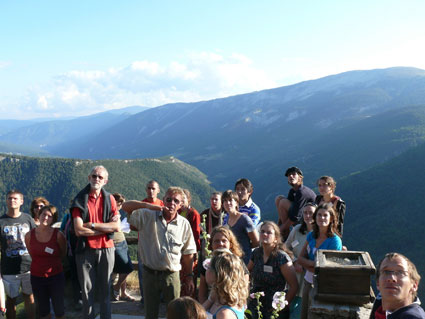 Poster sessionJean explaining the history of Peyresq on the first day
Poster sessionJean explaining the history of Peyresq on the first day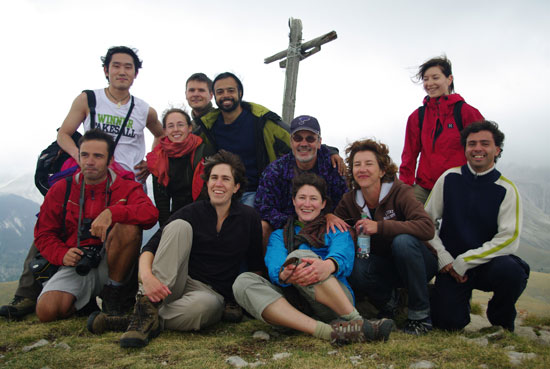
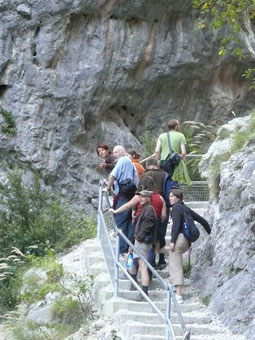 Excursion :
Excursion :
Gorges du VerdonHike in the local areaPhotos by Rik Leemans, Michael Padmanaba, Martin Sharman and Allan Watt

Ecole Thématique d’Eté du Non-Linéaire de Peyresq
Organisateur :
Laboratoire de Physique des Solides - Université de Paris-Sud
Coordinateurs :
Alain Joets et Jean-Luc Beaumont
Dates :
18 au 25 septembre 2008
Participants : Petrutza Anghel-Vasilescu, Médéric Argentina, Jean-Luc Beaumont, Youcef Bougherira, Hicham Chalabi, Yanne Chembo, Souad Chouli, Stéphane Chrétien, Julien Dervaux, Julien Deseigne, Guillaume Dumazer, Denis Entemeyer, Mélanie Fraisse, Marc Haelterman, Mariana Haragus, Gérard Iooss, Tiphaine Jézéquel, Alain Joets, Romain Joly, Laurent Larger, Marion Lebellego, Tatiana Lebedkina, Mikhail Lebyodkin, Marc Lefranc, Eric Lombardi, Stéphane Metens, Léonard Monsaingeon, Benjamin Ricaud, Nicolas Rojas, Jean-Michel Roquejoffre, Violaine Roussier-Michon, Ramdani Sliman, Gérard Thomas. - Compte rendu :
L'Ecole d'Eté du Non-Linéaire de Peyresq a été créée en 2002, pour aider à structurer la communauté du Non-Linéaire, en parallèle aux journées du Non-Linéaire qui ont lieu chaque année au mois de mars à l'Institut Henri Poincaré (Paris).
Schématiquement, les cours de l'Ecole sont séparés en 2 groupes :
1) des cours fondamentaux (2 cours de 6 heures, l'un sur l'aspect dynamique, l'autre sur l'aspect des structures)
Ces cours fondamentaux sont des cours de base, typiquement destinés aux étudiants en thèse pour les aider à acquérir un bagage conceptuel, à "se mettre à niveau". Leur contenu est général et assez bien délimité.
2) des cours spécialisés (3 cours de 4 heures)
Ces cours spécialisés ont pour but d'illustrer et d'approfondir la mise en pratique des méthodes du non-linéaire. Leur contenu change complètement d'une année sur l'autre.
Cette année, une attention particulière a été portée aux problèmes de "fronts".
Une nouveauté a été introduite dans l'organisation des cours cette année : 2 mini cours d'une séance sont donnés dans le but d'étoffer le contenu scientifique.
Le cours "Méthodes locales dans les systèmes dynamiques" par Gérard Iooss (IUF, Université de Nice, Laboratoire Jean-Alexandre Dieudonné) a présenté les méthodes fondamentales d'analyse en non-linéaire, à savoir la variété centrale qui permet de réduire la dimension du système étudié, et les formes normales qui permettent de calculer les termes pertinents contrôlant la dynamique. Une attention particulière a été portée sur le rôle des symétries.
Des exemples explicites, comme l'équation de Swift-Hohenberg, ont été traités et calculés en détails.
Le cours a été accompagné d'un polycopié très fourni qui donnera aux participants la possibilité d'aller encore plus loin à leur retour.
Le cours "Structures spatiales" par M. Médéric Argentina, (IUF, Université de Nice, Laboratoire Jean-Alexandre Dieudonné) a décrit le comportement spatial et temporel de structures essentiellement localisées. Ces objets sont appréhendés grâce à la notion de bifurcation telle qu'elle apparaît en théorie des équations différentielles ordinaires. Pour illustrer ce cadre théorique, des exemples ont été choisis en physique, chimie et biologie (motifs des coquillages). Le cours s'est accompagné de simulations numériques d'évolution de structures localisées en temps réel, le rendant ainsi particulièrement vivant.
Le cours "Fondements et applications de l'optique non-linéaire", par Marc Haelterman (Université Libre de Bruxelles) a donné une formation de base très complète en optique non-linéaire. Partant des concepts fondamentaux de l'électromagnétisme, le cours a introduit progressivement les phénomènes nouveaux résultant des non-linéarités : effet Kerr, diffraction, etc. La présentation a été faite par ordinateur grâce au maniement très astucieux de transparents numériques qui ont permis aux participants de suivre le développement théorique sans pratiquement devoir prendre de notes.
Le cours "Propagation et instabilités de fronts" par Stéphane Métens (MSC, Université Paris VII) a présenté des méthodes générales pour étudier la propagation, le profil et la stabilité de fronts. Ces méthodes sont appliquées explicitement aux équations de réaction-diffusion : instabilité d'Ising-Bloch, instabilité morphologique par courbure du front, etc.
Le cours "Dynamique des fronts de réaction-diffusion" par Jean-Michel Roquejoffre (IUF, Université Toulouse III, MIP) a présenté quelques méthodes mathématiques pour l'analyse d'équations de type réaction-diffusion et, à ce titre, a constitué un parfait complément au cours précédent. Le cours a montré toute l'utilité que l'on peut tirer de théorèmes généraux décrivant la stabilité globale de fronts progressifs multidimensionnels. Le cours s'est achevé sur la notion de fronts généralisés qui constituent une extension au concept d'onde progressive, lorsque le milieu est hétérogène.
Le mini cours "Défauts d'interface entre structures périodiques" par Marianan Haragus (Laboratoire de Mathé?matiques, Université de Franche-Comté, Besançon) a présenté une modélisation mathématique des défauts linéaires délimitant des structures périodiques d'orientation différente. Cette analyse s'applique typiquement aux structures convectives stationnaires.
Le mini cours "Introduction aux ondes de chocs" par Alain Joets (Laboratoire de Physique des Solides, Université Paris-Sud, Orsay) a présenté un bref panorama de quelques effets typiquement non-linéaires en gazodynamique : relations de Rankine-Hugoniot, compressivité des chocs, expansion non-linéaire des fronts d'explosion, etc.
Cette année une expérience a été présentée au public par Laurent Larger (Labo. Optique P. Duffieux - Besançon) sur la dynamique d'un circuit électronique non-linéaire. Via un oscilloscope numérique, le comportement dynamique d'un circuit de Chua (orbites périodiques, chaos, etc.) était montré, analysé et commenté en temps réel. Cette présentation, très vivante, a été particulièrement appréciée.
- Professeur Alain Joets
